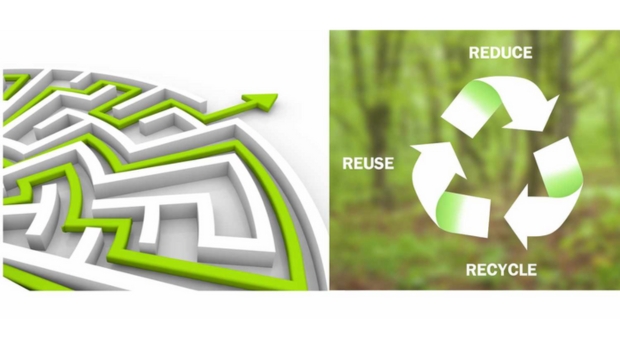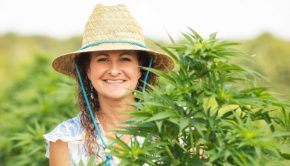A Look at Single-Use Plastics: Understanding the Challenges and Solutions
We might be tempted to bring plastic forks to a picnic or succumb to the expediency of prepackaged chips for our kids’ lunches, but single-use plastics wreak havoc on the environment and human health. Although marketed as disposable, most of these fossil fuel-derived, non-biodegradable items are not being recycled, so they languish indefinitely in landfills or pollute our waterways in the form of microplastics. “Plastic pollution has been linked to everything from infertility and cancer in humans to severe injury and death in wildlife,” says Veena Singla, senior scientist for the National Resources Defense Council, in New York.
Plastic Use Is Rampant
“Roughly 30 percent of garbage in the U.S. comes from single-use plastics,” says Shawn Flood, a partner and vice president of operations and customer care at SBC Waste Solutions, a waste collection company based in Broadview, Illinois.
Marketed for their inexpensive, lightweight, flexible and impermeable qualities, we have come to rely on plastic grocery bags, shrink wrapping, drink bottles, stickers, K-cups, straws, gloves, takeout containers and other throwaway products. According to the U.S. Environmental Protection Agency, approximately 380 billion plastic bags and wraps are used annually, which require 12 million barrels of oil to make.
Recycling Is Not Happening
Many plastic products that could be recycled are still getting tossed into the landfill. “The biggest problem is contamination,” Flood explains. “When someone puts a plastic milk jug into the recycling bin and there’s still milk inside of it, that ends up getting trashed. Those products become single-use plastics when consumers don’t do the correct job of washing recyclables.”
Banning Single-Use Plastics
Over the past few decades, countries including Costa Rica, France and Italy, as well as some U.S. states, have introduced laws that prohibit or tax single-use plastics. “They are banning single-use plastics in California,” Flood notes. “Everything is paper. Basically, you cannot find a plastic straw,” Flood notes.
Other states following the trend to ban certain plastics include Connecticut, Delaware, Hawaii, Maine, New York, Oregon, New Jersey and Vermont. The U.S. Department of the Interior is phasing out single-use plastics on public lands, including national parks, by 2032. A Los Angeles County public works study reports that a ban on plastic bags in San Jose has led to reductions of plastic bags found in storm drains (89 percent), rivers (60 percent) and residential areas (59 percent).
Some states, however, have chosen to protect the continued use of these items. For example, Indiana passed a bill in 2016 prohibiting city and county officials from taxing or restricting the use of disposable plastic bags by certain retailers. Similar laws have been enacted or proposed in Wisconsin, Idaho, Florida and Arizona.
Beware of Greenwashing
New single-use products are continually being introduced that claim to be better for the environment, but consumers need to be cautious of such promises, says Brandon Leeds, co-founder of SOFi Paper Products, based in Miami, Florida. “There’s a tremendous amount of greenwashing going on,” he explains. “They stamp the products as eco-friendly. For example, some agave straws are predominantly made with plastic and just mixed with agave.”
SOFi manufactures straws and drinking cups that are 100 percent paper, 100 percent plastic free and 100 percent compostable. They sell to 4,000 businesses in the U.S., including mom-and-pop coffee shops, high-end restaurants, convenience stores and popular food chains. Leeds remarks, “Our company mission is to educate people.”
Choosing Better Options
Alternatives to plastic, such as cotton or paper bags, also have environmental impacts, and the jury is out on whether single-use plastic bans can really improve the environment, according to Enhesa,
A study commissioned by the American Recyclable Plastic Bag Alliance, a group that represents U.S. manufacturers and recyclers of plastic bags, found that New Jersey’s ban resulted in a 60 percent decline in bag volume. However, the study also found six times more woven and non-woven polypropylene plastic was used to produce reusable bags, which are not widely recycled. The non-woven bags consume 15 times more plastic, and their production generates five times the greenhouse gas emissions per bag than the thin plastic bags.
Flood says one solution may be “to go back to the early days when glass was used for everything, and it could be used over and over.” Several states have created container deposit laws related to glass and plastic. In Oregon, for example, nearly every business that sells certain beverages in redeemable sealed containers is legally required to accept returned containers that can be recycled or reused.
The bottom line, Flood asserts, is that people need to move away from a throwaway mentality and stop using single-use plastics. “The consumer has the power to do anything,” he says. “When I go on vacation and I’m walking on the beach, I’m picking up pieces of plastic everywhere.”
Sheryl DeVore is a frequent contributor to national and regional publications and has authored six books on science, health and nature. Learn more at SherylDeVore.wordpress.com.





























